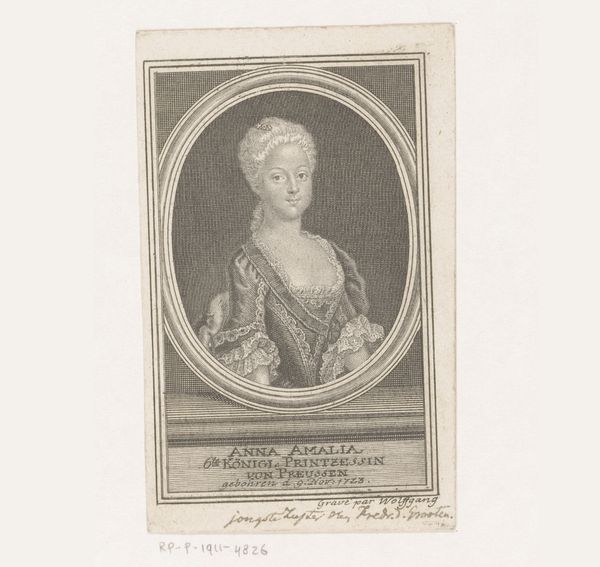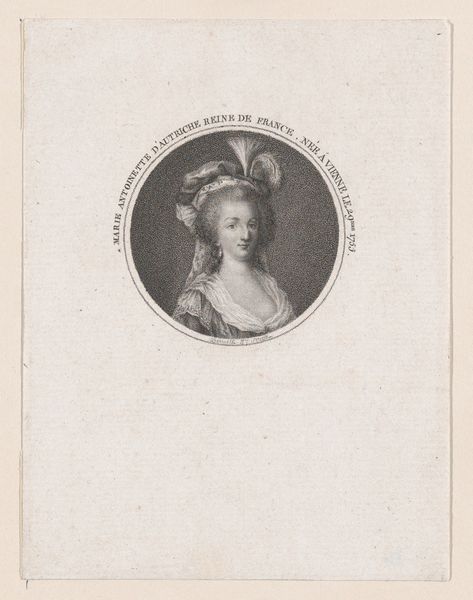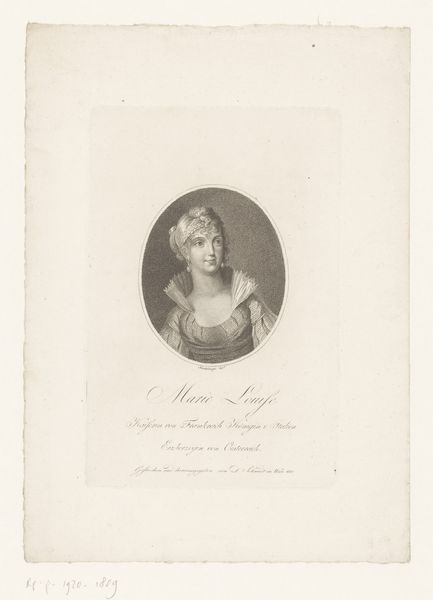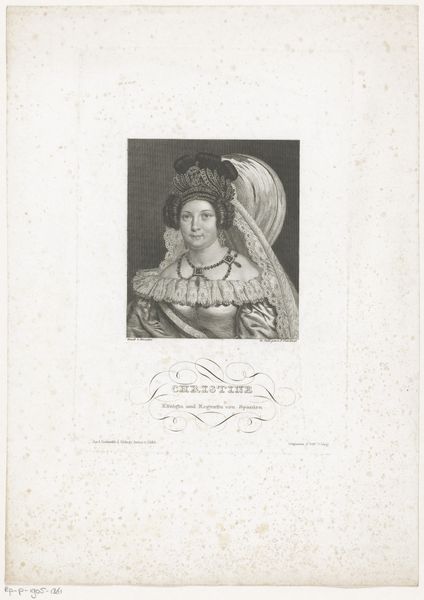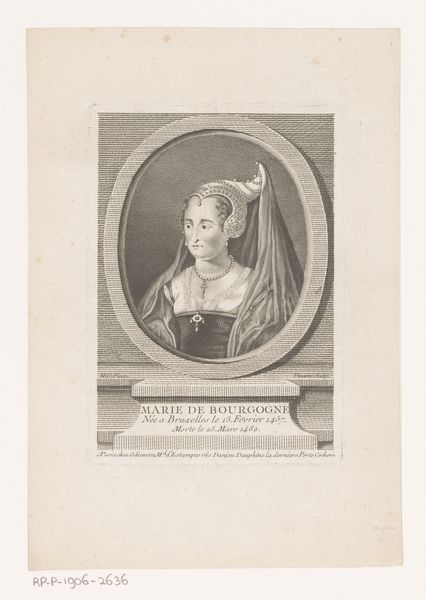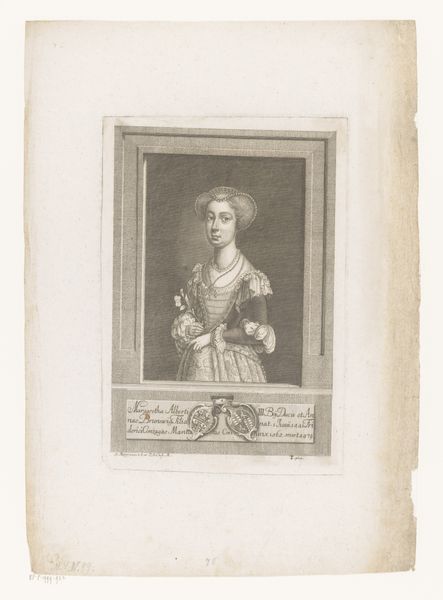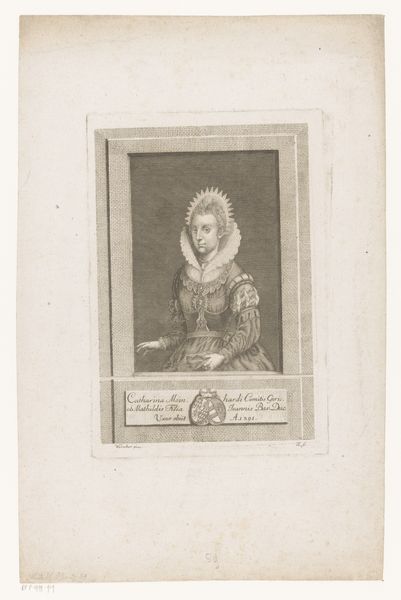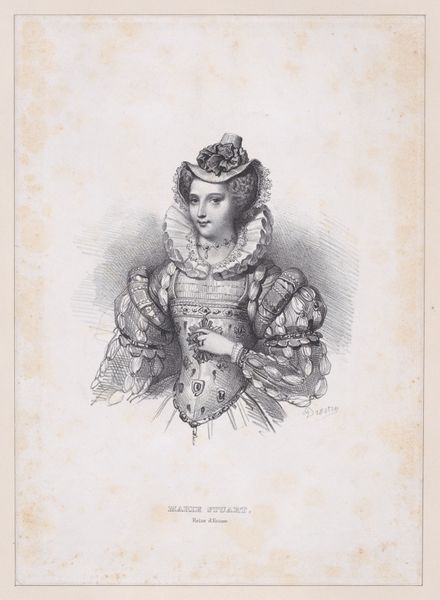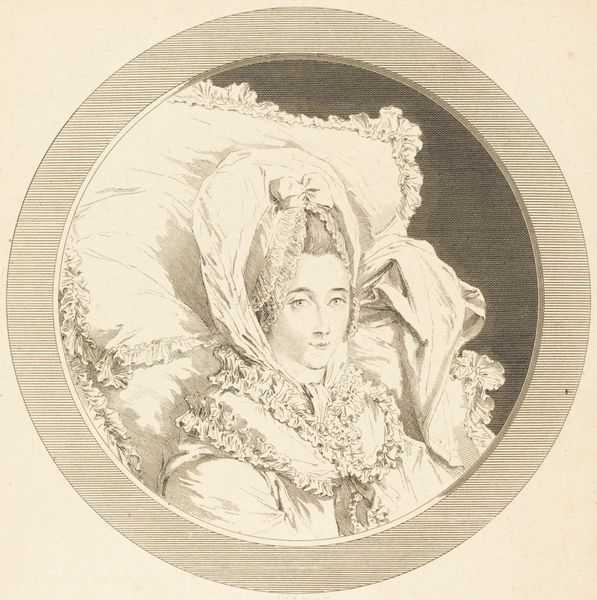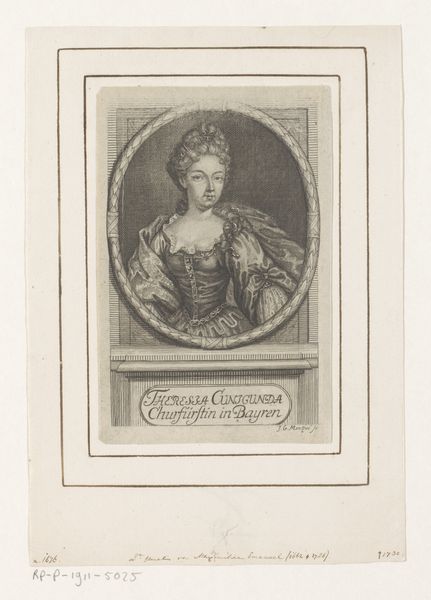
drawing, print, etching, engraving
#
portrait
#
drawing
#
neoclassicism
# print
#
etching
#
engraving
Dimensions: Plate: 6 11/16 × 4 3/4 in. (17 × 12 cm) Sheet: 11 in. × 8 3/8 in. (28 × 21.3 cm)
Copyright: Public Domain
Editor: This is "Mary, Queen of Scots," a print dating to 1778 by Richard Bernard Godfrey, using etching and engraving. It strikes me as a pretty standard Neoclassical portrait, very contained within that oval frame. What can you tell me about its historical context? Curator: Well, beyond being a portrait, think about the proliferation of images of historical figures, particularly royals, in the late 18th century. How do you think a print like this might have circulated and been consumed? Was it purely for aesthetic pleasure? Editor: Hmm, I guess it’s not just about showing what Mary looked like. Maybe it's about creating or reinforcing certain ideas about her? Was she a controversial figure back then, even so long after her death? Curator: Precisely. Mary's legacy was – and continues to be – highly politicized. The print, produced over 200 years after her execution, speaks to the ongoing fascination, and debate, surrounding her reign. Who do you think would be the target audience for such an image? Consider the cost of prints versus, say, a painted portrait. Editor: So, it’s probably aimed at a middle-class audience who want to participate in the debates about monarchy and power, but can't afford something commissioned? Does the location of the original drawing, mentioned at the bottom, also have any implications for its interpretation? The Church of St. Andrew in Antwerp… Curator: Exactly. Think about religious tensions, the Catholic-Protestant divide. Publishing it based on the artwork in a church… is this meant to emphasize Mary’s martyrdom? It invites deeper reflection on the artwork's public role in constructing historical narratives. Editor: I never thought of prints as being so involved in political conversations! Now I see this less as a simple portrait, and more as a statement. Curator: That's the fascinating thing about historical images; they were never neutral.
Comments
No comments
Be the first to comment and join the conversation on the ultimate creative platform.

